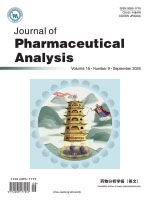2017 Vol. 7, No. 6
Display Method:
2017, 7(6): 349-364.
Abstract:
2017, 7(6): 374-380.
Abstract:
2017, 7(6): 388-393.
Abstract:
2017, 7(6): 394-400.
Abstract:
2017, 7(6): 401-405.
Abstract:
2017, 7(6): 406-410.
Abstract:
2017, 7(6): 411-416.
Abstract:
2017, 7(6): 417-422.
Abstract:



